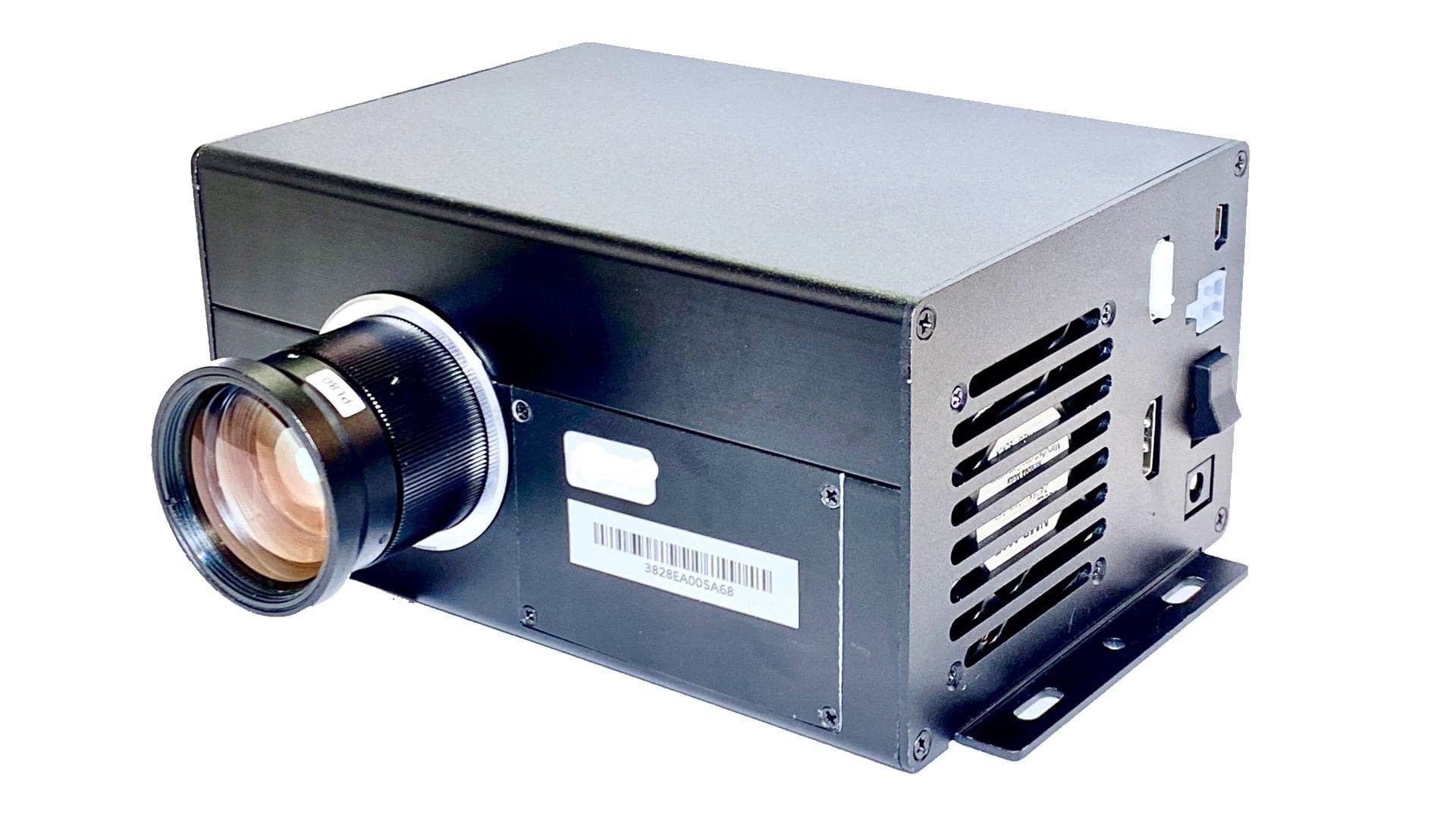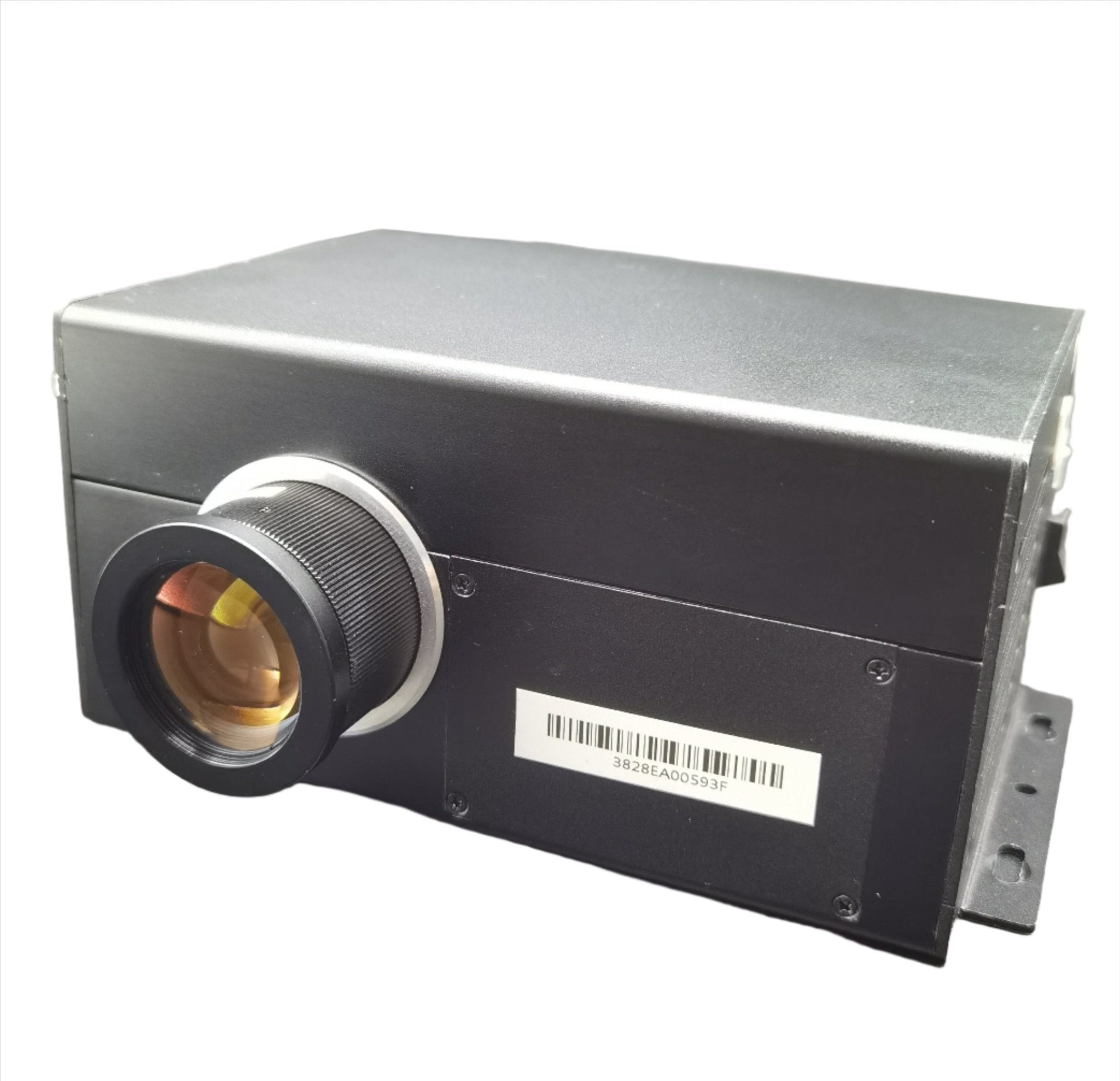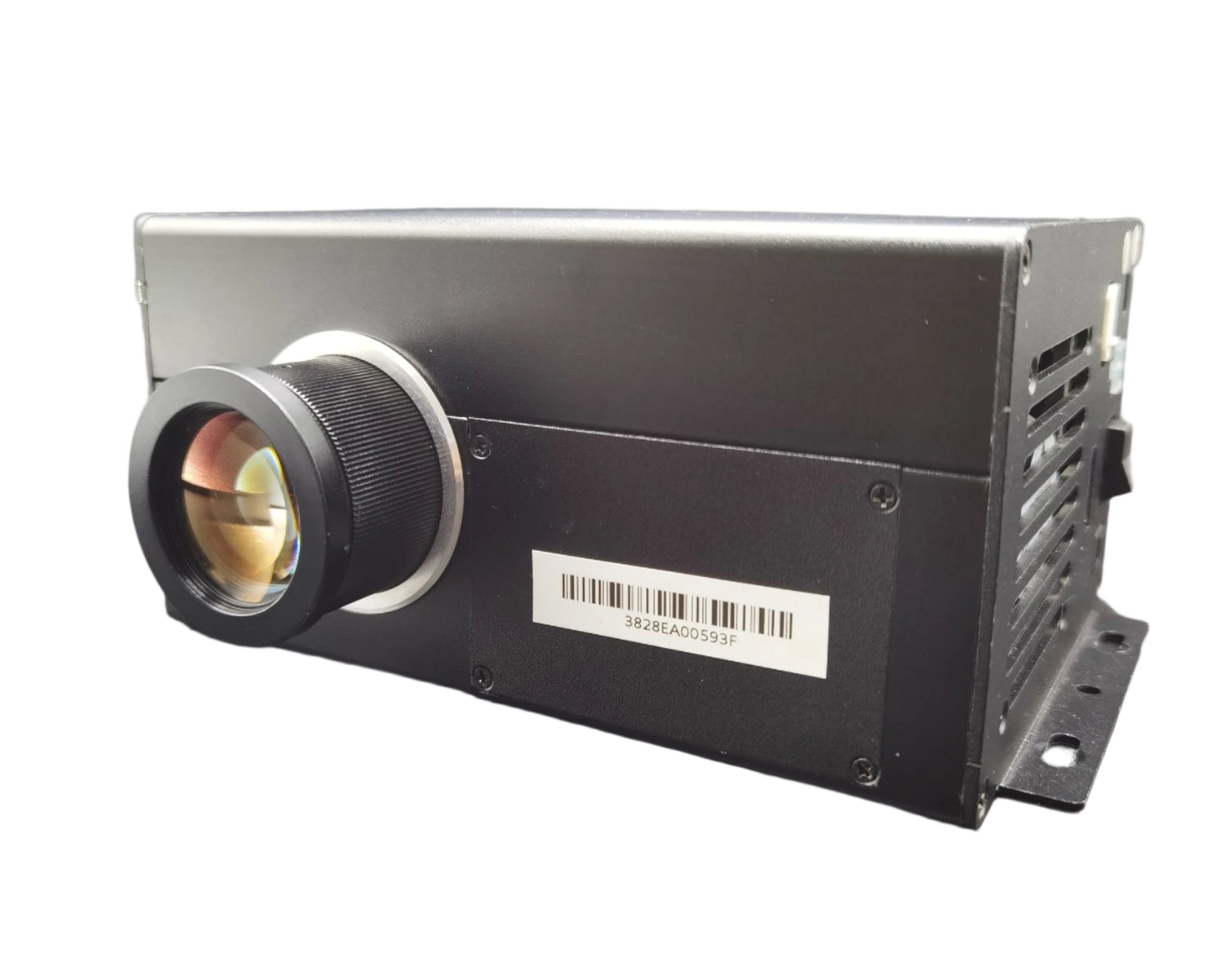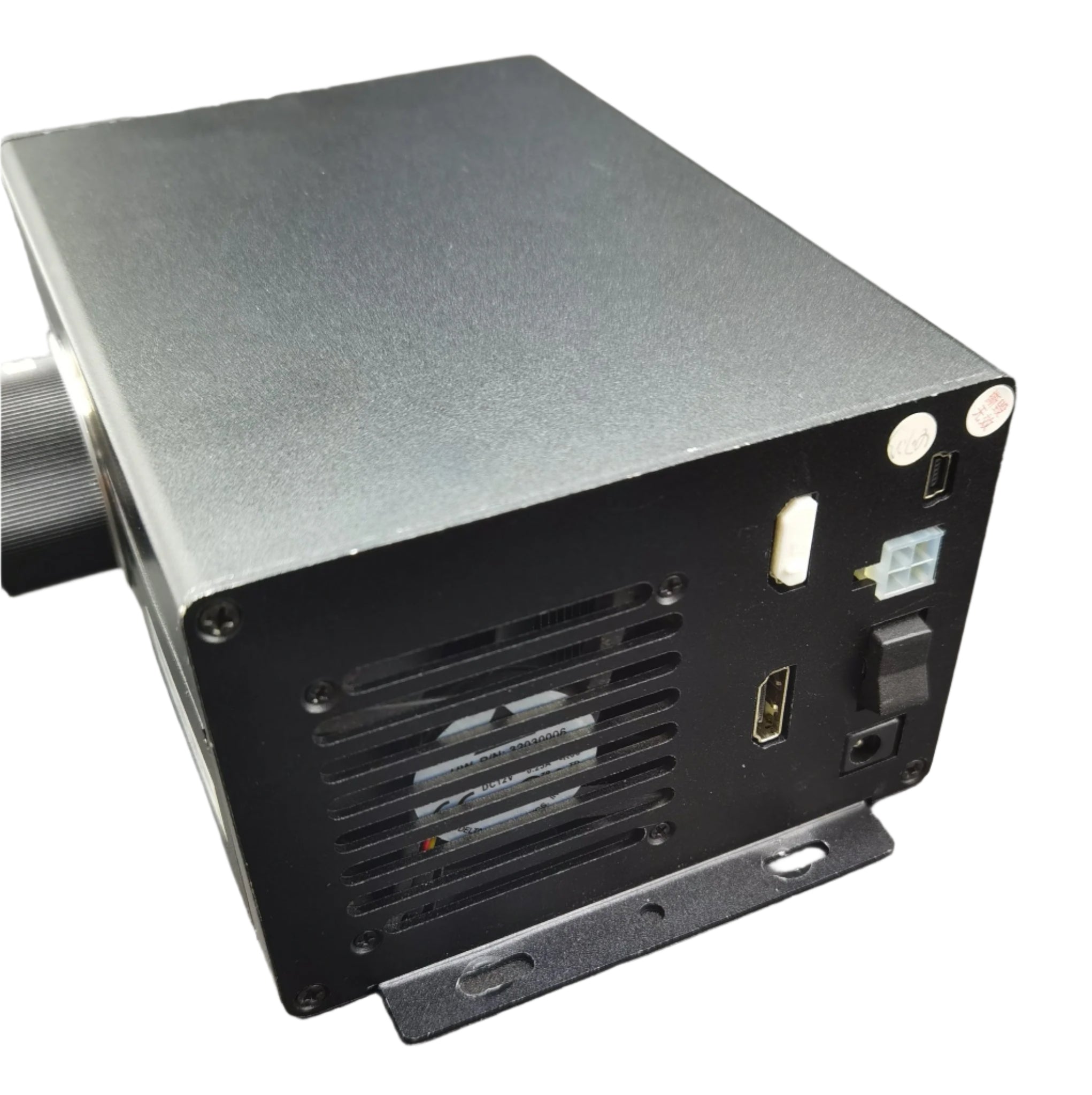



جهاز عرض SM9X 1080P RGB أحادي اللون DLP لأجهزة الملقط البصري
يمكن لأنظمة الملقط الضوئي المصممة بمصدر LED في النطاق المرئي (على سبيل المثال، ضوء 470 نانومتر أو 633 نانومتر، 732 نانومتر)، جنبًا إلى جنب مع جهاز المرآة الدقيقة الرقمية (DMD)، أن تولد أنماط مجال ضوئي معقدة بشكل ديناميكي (مثل الملقط الضوئي المجسم)، مما يتيح التلاعب المتوازي والنزوح الدقيق للخلايا المتعددة.
تعمل أجهزة عرض DLP ذات الضوء أحادي اللون SM9X RGB على تقليل مخاطر الضرر الضوئي من خلال ضبط الطول الموجي، مما يجعلها أكثر ملاءمة للمراقبة طويلة المدى للعينات البيولوجية الشفافة مقارنة بالملاقط البصرية التقليدية ذات الطول الموجي الواحد (على سبيل المثال، ضوء الأشعة تحت الحمراء بطول 1064 نانومتر، المستخدم عادة في الأنظمة التقليدية).
يستخدم جهاز العرض DLP SM9X RGB هذا دقة تتراوح بين 50 ميكرومتر و80 ميكرومتر ويحتوي على ضوء LED RGB ساطع لإظهار أجهزة الملقط البصري الخاصة بك للتلاعب المتوازي بالخلايا المتعددة.
يُنتج جهاز عرض RGB DLP صورًا عالية الدقة على الراتنج أو القناع أو أي مادة بصرية أخرى. يُستخدم بشكل رئيسي في مجالي الطب والعلوم، ولكنه قابل للاستخدام في جميع المجالات تقريبًا. جهاز عرض SM9X RGB DLP هو وحدة محرك ضوء عالية الدقة بدقة تتراوح بين 50 و80 ميكرومتر. يحتوي على نمطين مختلفين للتحكم في سطوع LED وإيقاف تشغيله.
توفر تقنية جهاز عرض RGB DLP هذه حلاً متعدد الأبعاد للتلاعب بالخلايا منخفض التلف الضوئي لأغراض البحث الطبي الحيوي، مستفيدة من مرونة ودقة عرض الضوء أحادي اللون RGB.
- مثالي لأجهزة الملقط البصري: جهاز العرض DLP SM9X RGB بدقة 1080 بكسل هو نظام عرض عالي الدقة بزاوية واسعة مثالي لأجهزة الملقط البصري
- مصنوع من مواد عالية الجودة: تم تصنيع جهاز العرض هذا من مواد الألومنيوم والبلاستيك حتى يتمكن من تحمل أي نوع من بيئة العمل.
- شاشة عرض LED مذهلة: توفر شاشة عرض RGB رائعة، مما يجعلها مثالية لأي موقف صناعي علمي حيث تحتاج إلى إسقاطات عالية الجودة للتلاعب بالخلايا في الطب الحيوي.
خيار العدسة:

للطلبات الكبيرة يرجى الاتصال بـ info@si-cube.com للحصول على المزيد من الخصم.
يمكن تنزيل دليل التشغيل والبرنامج المقابل لهذا المنتج من الرابط التالي: https://www.si-cube.com/html/support-list.html

جهاز عرض SM9X 1080P RGB أحادي اللون DLP لأجهزة الملقط البصري
If you have any questions, you are always welcome to contact us. We'll get back to you as soon as possible, within 24 hours on weekdays.
-
Shipping Information
Use this text to answer questions in as much detail as possible for your customers.
-
Customer Support
Use this text to answer questions in as much detail as possible for your customers.
-
FAQ’s
Use this text to answer questions in as much detail as possible for your customers.
-
Contact Us
Use this text to answer questions in as much detail as possible for your customers.
FAQs
Please read our FAQs page to find out more.
What transportation method do you use?
All our products are shipped via international express services, such as DHL and FedEx,? completely free of charge
What is DLP 3D printing, and how does it work?
DLP 3D printing is a resin-based additive manufacturing technology that uses light to cure liquid photopolymer layer by layer. It involves projecting digital images onto a vat of liquid resin, where the exposed resin hardens to form each layer of the 3D object.
How does DLP 3D printing differ from other 3D printing technologies?
DLP 3D printing differs from other technologies such as FDM (Fused Deposition Modeling) in its use of light to cure resin, which allows for faster and more precise printing. It also typically offers higher resolution and smoother surface finishes.
Why are UV projectors critical in DLP 3D printing?
UV projectors are critical in DLP 3D printing because they emit the ultraviolet light that cures the resin. The quality, speed, and reliability of the printing process depend heavily on the performance of the UV projector.
What factors should be considered when selecting a UV projector for DLP 3D printing?
When selecting a UV projector, factors to consider include wavelength, resolution, LED lifespan, controller compatibility, and mechanical integration. The ideal projector should match the specific needs and requirements of the DLP 3D printing system.
What are the system requirements for DLP 3D printing?
System requirements for DLP 3D printing include a compatible UV projector, resin vat, build platform, and control system. Specific hardware specifications, such as resolution and interface compatibility, should also be considered.
How do I connect and configure a DLP 3D printing system?
Connecting and configuring a DLP 3D printing system typically involves connecting the UV projector to a PC via USB, launching the manufacturer's proprietary configuration software, and setting up the printer parameters, such as layer thickness and exposure time.
What is "pixelation" in DLP 3D printed models, and how can it be addressed?
Pixelation" refers to the appearance of tiny square or grid-like patterns on the surface of DLP 3D printed models. It can be addressed by increasing the resolution of the UV projector, adjusting the light curing parameters, or optimizing the print path.
What role do TIR prisms play in DLP 3D printing, and why are they important?
TIR (Total Internal Reflection) prisms play a critical role in DLP 3D printing by precisely redirecting light from the micro-mirror arrays to the projection optics. They maintain polarization and ensure that the light is evenly distributed across the resin vat, which is essential for high-quality printing.
What languages and currencies are supported on
The website supports multiple languages, including English, Simplified Chinese, Arabic, Korean, German, and Japanese. It also offers a variety of currency options, such as USD, EUR, AUD, and more, to cater to international visitors.
How can I stay updated with new collections and exclusive offers
To stay updated with new collections and exclusive offers, you can subscribe to the website's newsletter by providing your email address. This will allow you to receive notifications about the latest products, promotions, and news directly to your inbox.
